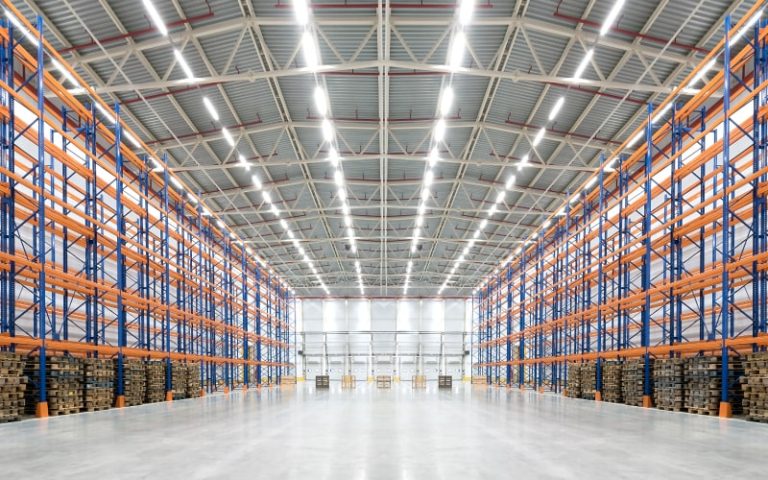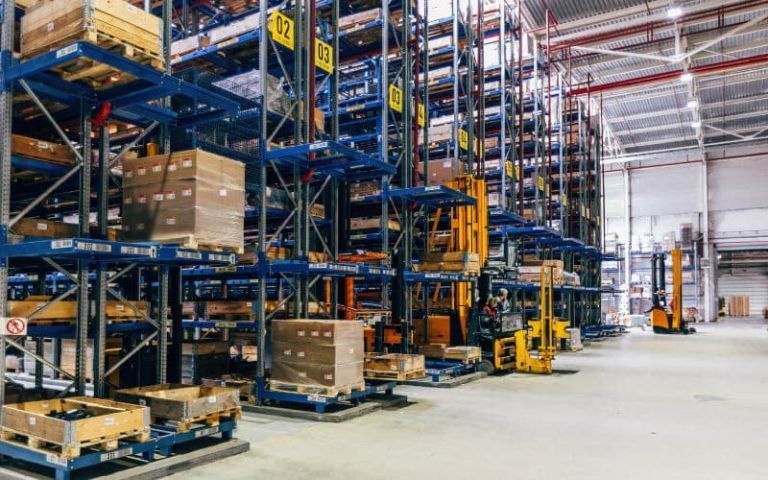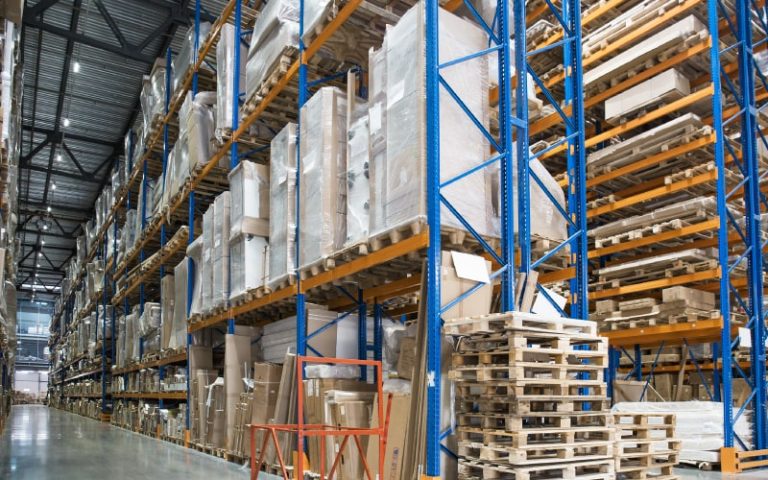Forklifts that break down. Conveyor systems that shut down. Double-deep pallet racks that don’t always move inventory into place.
It’s beyond frustrating. It’s expensive.
It’s estimated that the average cost of downtime in a mid-size warehouse can easily exceed $10,000 per hour. Those are the obvious costs, though. Even if your warehouse avoids these types of breakdowns, industrial material handling equipment (MHE) produces hidden costs that hurt your margins and your operational efficiency.
The Hidden Costs of Poor Material Handling
One of the most immediate consequences of poor material handling is product damage. When goods are improperly stored, transported, or loaded, they are more likely to be crushed, dropped, or mishandled.
This results in direct financial losses and creates inefficiencies throughout the supply chain. Damaged products may need to be repackaged, repaired, or written off entirely, increasing waste and reducing your profits. If it gets out the door to your customers, you can hurt relationships and have to pay for return handling.
Solution: Investing in the right storage solutions, such as heavy-duty pallet racking and wire decking, ensures products are properly secured. Using industrial material handling equipment suited for specific product types, like warehouse conveyor systems for fragile goods, can prevent unnecessary damage.
Higher Workplace Injury Rates
Warehouses are full of hazards, and poor material handling only increases the risk of workplace injuries. Disorganized storage areas, overloaded shelves, and improperly used equipment can lead to falls, collisions, and musculoskeletal injuries.
The costs of workplace injuries extend beyond medical expenses and workers’ compensation claims. Productivity suffers when employees are absent and morale can decline in an unsafe work environment. Safety violations can result in regulatory fines and legal liability.
Solution: Teaching employees how to use forklifts, pallet jacks, and other MHE correctly can significantly lower accident rates. The right industrial material handling equipment can also improve warehouse ergonomics.
Reduced Operational Efficiency
A poorly organized warehouse slows down order fulfillment, leading to inefficiencies in labor and productivity. When team members have to navigate cluttered aisles, search for misplaced inventory, or manually transport materials, you’re wasting time and money. Inefficiencies can also create bottlenecks in production, causing delays that impact output.
Solution: Optimizing warehouse layout by implementing strategic storage solutions and clear material flow paths improves efficiency. Using tools like automated warehouse conveyor systems or high-density storage solutions speeds up operations.
Equipment Wear and Tear
Overloaded pallet racks or forklifts, improperly used warehouse conveyors, and neglected maintenance can lead to excessive wear and unexpected breakdowns.
When you have frequent repairs and replacements, your maintenance costs go up, and downtime increases. The risk of workplace injuries rises.
Solution: Conducting regular inspections and preventative maintenance on material handling equipment extends its lifespan and reduces breakdowns.
Compliance and Legal Penalties
Failure to follow proper material handling procedures can lead to compliance violations, particularly with workplace safety regulations. OSHA has guidelines on equipment use, warehouse safety, and employee training.
Fines for non-compliance can be substantial, and repeated violations may result in lawsuits or operational shutdowns. They can also damage your reputation, potentially hurting your business.
Solution: Conduct routine audits and invest in updated equipment to keep your operations running smoothly while meeting safety standards.
Fixing These Issues
Fixing these issues requires investing in high-quality pallet racking, shelving systems, and ergonomic industrial material handling tools. For example, wire decking can keep items from falling through racks, while mezzanines can increase storage capacity without expanding the warehouse footprint. Selecting the proper lifting and transport equipment for different loads ensures that products are handled with care.
Optimize Warehouse Layout and Inventory Flow
An optimized warehouse layout makes it easier to access materials quickly and safely. Strategic placement of shelving, warehouse conveyors, and workstations reduces unnecessary movement and speeds up picking and packing.
Technology such as automated storage and retrieval systems (AS/RS) can further improve efficiency by organizing inventory based on demand patterns.
Creating a Culture of Safety
Ongoing education and refresher courses ensure that employees remain aware of best practices. Establishing a culture of safety, where workers feel empowered to report hazards and follow protocols, can significantly reduce workplace injuries and inefficiencies.
Conduct Regular Inspections and Maintenance
We can’t emphasize this enough. Preventative maintenance helps avoid unexpected equipment failures and downtime. Conducting routine inspections of pallet racks, forklifts, and other material handling tools ensures that everything is in good working condition. In cases of an incident, your documentation may also be helpful to mitigate liability.
Get Expert Guidance
If your warehouse is facing challenges with material handling, expert guidance can help you identify cost-effective solutions tailored to your needs.
Contact Conesco Storage Systems for a free consultation to explore the best ways to optimize your warehouse and protect your bottom line.



